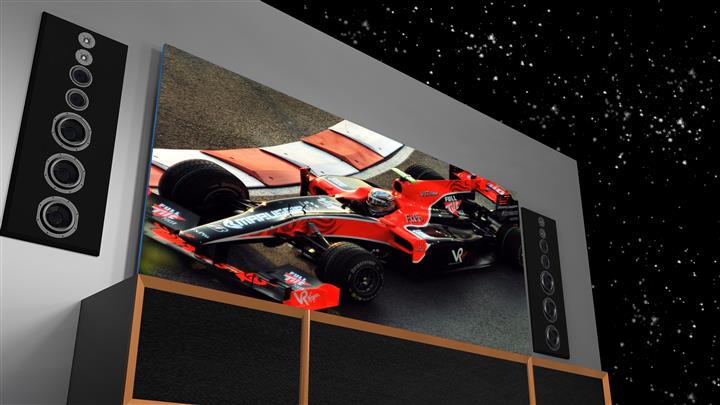DSB: “When you’re at audio shows, do audiophiles care about the aesthetics of speakers?”
JT: “The Wife Acceptance Factor is an issue. If we’ve been criticized at all, it’s because our speakers look conventional. They don’t look like 9 foot tall palm trees. [Laughs]. If you want the speakers to disappear, which a lot of custom integrators do, we’re not in the game.”
DSB: “How do you see the success that Bryston’s speakers have earned?”
JT: “In the beginning, there were a lot of nay-sayers. When I first announced that Bryston was going to build a loudspeaker, most people said two things: one, you’re crazy… it won’t work; and two, ‘That’s just Axiom with Bryston’s name on it.’ ”
DSB: “But you’re past that now?”
JT: “Yes… we’re over the hump; but not without headaches.”
DSB: “Such as…?”
JT: “I had no intention of getting into the speaker business at the level we’re now at. What happened was, once we’d introduced the passive Model T, people said: ‘James, you need a smaller speaker.’ So… we developed the Mini-T. And then people said: ‘You need something in the middle.’ So… we developed the Middle T.”
DSB: “So the market demanded that you expand the business?”
JT: “Yes… definitely. Distributors called me and said: ‘James I’ve got speaker retailer so and so that I distribute to, but I need the price point below where the T series are.’ And that’s where the Model A series of speakers originated from. We needed a range of speakers that were competitive across a large price spectrum. And then they asked for centre channels, subwoofers, and on and on. All that came as a result of the market place demanding a wide variety of speakers. You can’t have only 3 speakers and no centers and no subs.”
DSB: “You honestly didn’t think that the passive Model T’s success would lead Bryston into having to release more speakers?”
JT: “No. In that regard, the demand for a wide range of loudspeakers just exploded on me. If it wasn’t for Axiom’s capacity to produce these speakers in a relatively straight-forward and efficient way, the demand couldn’t have been met.”
DSB: “What’s next on the horizon?”
JT: “Our next big project is the T-Rex. It’s going to be a 2 piece system, with a line source of mids and tweeters and a line source of woofers.”
DSB: “The name ‘T-Rex’ conjures up images of some sort of monster loudspeaker system.”
JT: “Ohhh… it’ll be a monster; but it’ll be a 2-piece monster. Remember the old Infinity Reference Standard system? Think of those.”
DSB: “You mean… Infinity’s 7 foot tall, 4 cabinet IRS system from the 1980s?”
JT: “Yes… that was a line source too. The T-Rex will have a tweeter and mid array; and a woofer array. And the outriggers will be designed so that you have to place the woofer array and mid-tweets in a specific location; so that the time alignment and the phasing will work properly.”
DSB: “So the metal braces which attach to the bottom of the speakers for better lateral stability and energy transfer—the ‘outriggers’—they’ll also be used to dial in the phase and time alignment?”
JT: “Yes. The advantage of a line source, as opposed to a point source, is that you get a more realistic sound at a greater distance away from the speakers. And you can move a lot of air, because each one of those drivers is handling a very small part of what’s required to fill a room with sound.”
DSB: “I’m imagining a colossal 7 foot tall system with four separate speaker arrays. Do you have prototypes of this T-Rex system up and running now?”
JT: “Ian and Andrew and I are talking about it- about how it will look and how many drivers it will require. The tweeter is a limiting factor. The tweeter can only radiate so much energy. We’re trying to decide how many tweeters and how many mids we need to get the right balance—the cohesiveness—from this system. We want to make it passive with an external crossover network, but we’re also going to offer an active model.”
DSB: “And when will the T-Rex be released to the public?”
JT: “Hopefully by the end of this year; or in early 2016.”
DSB: “And what’s the projected retail price going to be?”
JT: “It might end up being a $20K system- but pricing isn’t finalized; yet.”
DSB: “And, with this $20,000 monster T-Rex system, are you trying to unleash a ‘cost-no-object’ speaker system that goes after all of the $100,000 plus level speaker systems that are already out there? Or… why are you doing this?”
JT: “Because it’s possible to do at an affordable price; and because I think it would be a neat product.”






